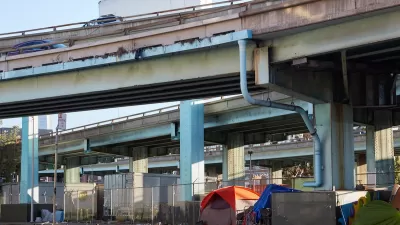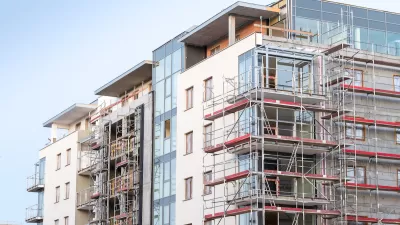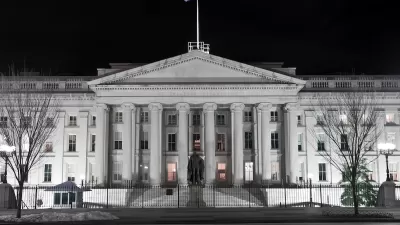Indigenous people make up a disproportionately high percentage of the unhoused population, but many programs designed to assist them don’t reach those most in need.

A Native-Inclusive Safe Outdoor Space (SOS) in Denver, Colorado offers shelter to unhoused Indigenous people, in advance of the first affordable housing complex designed for Indigenous residents which will break ground this year.
As Raksha Vasudevan explains in High Country News, “Indigenous people comprise 2.6% of America’s population, but in 2023, they accounted for 3.9% of those experiencing homelessness.” Vasudevan adds that “In Denver, they are overrepresented in the unhoused population by 400%.” Across the West, over 16,000 Indigenous people were homeless in 2023.
To get around federal prohibitions on using race as a criterion in housing programs, the housing authority in Portland, Oregon used HUD Indian Housing Block Grant funding to create affordable housing that prioritizes Indigenous people. Other organizations use proxy indicators such as “educational attainment, income, home value, utilization of social services, and free and reduced lunch status for children” to ensure Indigenous people get access to the services and housing they need.
According to Derrick Belgarde, Siletz and Chippewa-Cree, executive director of Chief Seattle Club, “There’s certain populations where it makes sense … to provide specifically for them.” Belgarde adds, “What the data shows is that you should be able to do that with Native Americans as well.”
FULL STORY: Can affordable housing for Indigenous communities work?

Study: Maui’s Plan to Convert Vacation Rentals to Long-Term Housing Could Cause Nearly $1 Billion Economic Loss
The plan would reduce visitor accommodation by 25,% resulting in 1,900 jobs lost.

North Texas Transit Leaders Tout Benefits of TOD for Growing Region
At a summit focused on transit-oriented development, policymakers discussed how North Texas’ expanded light rail system can serve as a tool for economic growth.

Why Should We Subsidize Public Transportation?
Many public transit agencies face financial stress due to rising costs, declining fare revenue, and declining subsidies. Transit advocates must provide a strong business case for increasing public transit funding.

How to Make US Trains Faster
Changes to boarding platforms and a switch to electric trains could improve U.S. passenger rail service without the added cost of high-speed rail.

Columbia’s Revitalized ‘Loop’ Is a Hub for Local Entrepreneurs
A focus on small businesses is helping a commercial corridor in Columbia, Missouri thrive.

Invasive Insect Threatens Minnesota’s Ash Forests
The Emerald Ash Borer is a rapidly spreading invasive pest threatening Minnesota’s ash trees, and homeowners are encouraged to plant diverse replacement species, avoid moving ash firewood, and monitor for signs of infestation.
Urban Design for Planners 1: Software Tools
This six-course series explores essential urban design concepts using open source software and equips planners with the tools they need to participate fully in the urban design process.
Planning for Universal Design
Learn the tools for implementing Universal Design in planning regulations.
City of Santa Clarita
Ascent Environmental
Institute for Housing and Urban Development Studies (IHS)
City of Grandview
Harvard GSD Executive Education
Toledo-Lucas County Plan Commissions
Salt Lake City
NYU Wagner Graduate School of Public Service





























